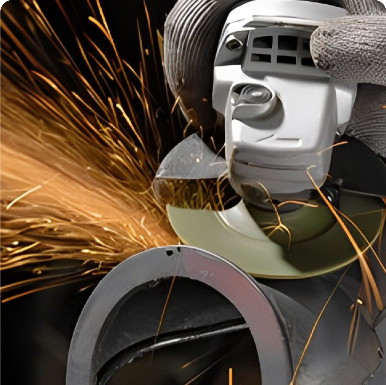Different Types of Grinding Wheels and Their Uses
Grinding wheels are essential tools in various manufacturing and metalworking processes. They are made from abrasive particles that are bonded together, allowing them to effectively remove material from workpieces. Depending on the application, there are several different types of grinding wheels available, each designed for specific tasks and materials. Understanding the various types and their appropriate uses can enhance efficiency and precision in industrial operations.
1. Straight Grinding Wheels
Straight grinding wheels are the most common type, characterized by their flat, cylindrical shape. These wheels are typically mounted on bench grinders and are used for sharpening, grinding, and finishing tasks. They are ideal for grinding flat surfaces, bevels, and sharp edges on metal tools and components. The abrasives used in straight grinding wheels vary from aluminum oxide to silicon carbide, depending on the material being ground.
2. Depressed Center Grinding Wheels
Depressed center grinding wheels, also known as cut-off wheels or flap discs, have a recessed center that allows them to be used on angle grinders. Their design enables efficient material removal while providing a larger grinding surface. These wheels are especially effective for grinding welds, rust, and other surface imperfections on metal. They are available in various thicknesses and diameters, making them versatile for different applications.
Bonded abrasive wheels are constructed by combining abrasive materials and bonding agents under high heat and pressure. These wheels can be found in various shapes, such as cup, cylinder, and dish forms, which cater to specific grinding tasks. They are often used in industrial applications for heavy-duty grinding, including surface preparation, polishing, and finishing of hard materials like steel and concrete.
4. Diamond Grinding Wheels
different types grinding wheels

Diamond grinding wheels are specialized tools that utilize diamond particles as abrasives. These wheels are known for their durability and ability to grind hard materials that are typically challenging to work with, such as ceramics, glass, and very hard metals. They are often used in applications requiring precision, such as optical lens fabrication, tool sharpening, and grinding of composites. Diamond wheels can be relatively more expensive; however, their longevity and efficiency justify the investment.
5. Cubic Boron Nitride (CBN) Grinding Wheels
Cubic boron nitride wheels are designed for grinding hard steels and superalloys. CBN is second only to diamond in terms of hardness, making these wheels highly effective for precision grinding applications in the aerospace and automotive industries. They are particularly beneficial for grinding materials at higher temperatures without losing their effectiveness or durability. Like diamond wheels, CBN grinding wheels offer longer service life compared to traditional abrasive wheels.
6. Vitrified Grinding Wheels
Vitrified grinding wheels are made from a combination of abrasive materials and a ceramic bonding system. These wheels are ideal for producing fine finishes and are commonly used in operations requiring high precision. Vitrified wheels can withstand high temperatures and provide excellent shape retention, making them suitable for grinding tough materials like steel and hardened alloys. They come in various shapes and sizes, allowing for diverse applications.
7. Resin Bond Grinding Wheels
Resin bond grinding wheels are flexible and adaptable, making them suitable for various grinding, cutting, and finishing tasks. The resin bond allows for controlled wear and provides a cooler grinding action, reducing the risk of thermal damage to the workpiece. These wheels are often used for grinding non-ferrous metals, plastics, and other softer materials and are widely used in various fields, including automotive, aerospace, and woodworking.
Conclusion
In summary, grinding wheels are vital tools in manufacturing and metalworking industries, with various types designed for specific applications. From straight grinding wheels to specialized diamond and CBN wheels, each type serves unique purposes. Understanding the characteristics and suitable applications of these grinding wheels can significantly improve the efficiency and quality of grinding tasks, ensuring better results and productivity in industrial settings.
Post time:Oct - 10 - 2024

















